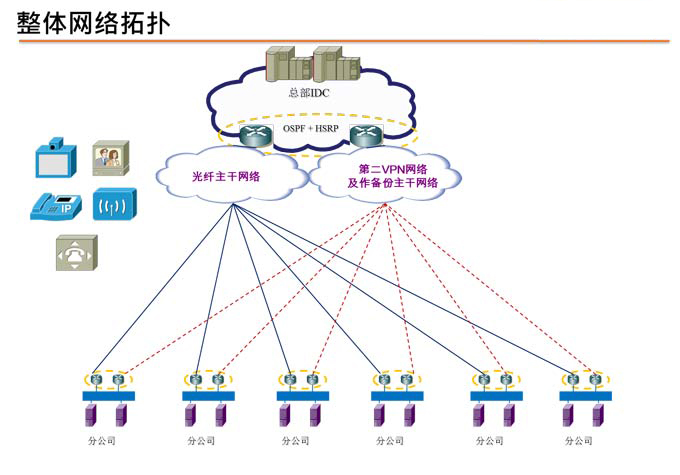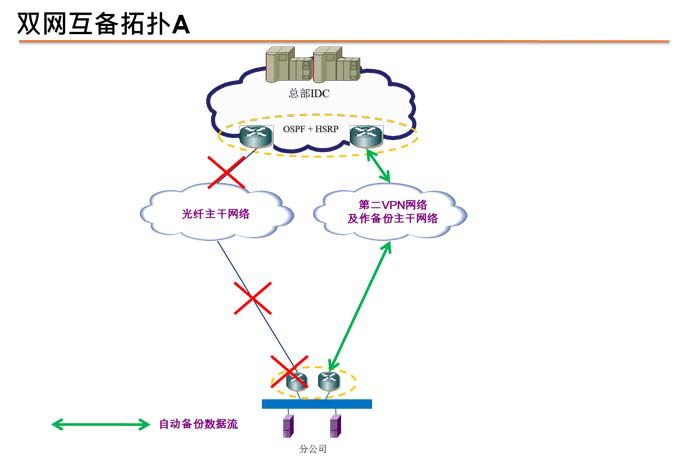Domestic Smart Networking (MSTP/SDH)
With the business expansion of an enterprise, its branches are constantly developing, starting in one city and then spreading to the entire country and even to the entire world. The wide distribution of branches brings a new challenge. How can data, voice, and video services interwork between its branches and the headquarters?
More and more enterprises are gradually building their own information systems so that they can obtain information more rapidly and improve their core competitiveness. Meanwhile, it is also observed that a lot of enterprises do not plan solutions properly when building enterprise networks. As a result, the networks are often slow, insecure, and difficult to maintain and expand, which seriously hinders the information engineering of the enterprises.
When interconnecting self-built networks, an enterprise should consider the following issues:
A、Comprehensive network planning and long-term expansion planning
B、Selection of high-quality line supplier and consolidation of system resources provided by different line suppliers
C、Professional 24/7 line monitoring, line drop alarm, fast response to faults, and troubleshooting process
D、Line data distribution and data analysis
E、Detailed arrangements about equipment customization, installation, update, and maintenance
F、Economic loss caused by poor collaboration between the equipment suppliers, line suppliers, and network suppliers
G、Complete disaster recovery
H、Network talents management, and setup and update of the technical team
I、Professional line installation application, migration, and upgrade
Advantage:
Total network planning solution: including network planning, line selection, engineering implementation, after-sales support, and maintenance solutions.
Professional network consultation service: Help customers resolve their Internet and intranet issues once for all.
Consolidation of quality resources of operators: The professional line resource team applies for line installation and handles various property related issues.
Construction of primary and secondary networks: Enterprises can adopt the dual-network solution, and the two networks work in mutual backup mode.
Fully-responsible window: FMLink is the sole service supplier, and therefore will take all responsibilities for any problems met by customers without passing these problems to other vendors.
Fast and professional service: Professional engineers provide 24-hour one-to-one service to reduce the time for communication with customers. Problems can be resolved at a phone call. The network is uninterruptedly monitored throughout the year, and comprehensive network system services are provided.
Fast, safe, and exclusive use of the network: Enterprises can use private networks in a real exclusive manner, without sharing bandwidth or nodes.
Network command of the headquarters: The bandwidth at the headquarters is sufficient and is equal to the sum of all bandwidths of branches.
Truly reliable availability: The network availability between network access points is as high as 99.99%.
Professional installation and compatibility test: After equipment is installed, FMLink provides the professional User Acceptance Testing (UAT).
Free of equipment maintenance: Customers do not need to consider the issue of selecting hardware equipment, and hardware can be upgraded or expanded at any time free of charge.
Value-added services for the entire system: FMLink provides total solutions that cover the professional turnkey line (such as the private line and MAN) and system equipment (such as the email, firewall, internal IPPBX, VC, and network monitoring).
Rich experience: FMLink has more than 10 years of network service experience, and is serving more than 600 customers all over China.
Network diagram:




Characteristics:
The implementation procedure is as follows:
1. Learn the customer's general requirements.
2. Design a complete solution based on the customer's network use requirements, expected quality, and financial budget.
3. Learn the operator resources available for the customer's headquarters and all branches.
4. Monitor construction of the operator line.
5. Complete high-standard line acceptance and subsequent quality maintenance.
6. Complete equipment installation and UAT.
7. The procedure for building active and standby networks is as follows:
A. The headquarters and branches are all equipped with dual routers which work in hot backup mode ensured by the Hot Standby Router Protocol (HSRP), thus ensuring hardware redundancy.
B. Open Shortest Path First (OSPF) is used between routers as the automatic and dynamic route learning mechanism, and used together with the Border Gateway Protocol (BGP) to route data streams.
C. The active router is connected with the primary optical fiber line, and the standby router is connected to the backup line. The active network coexists with the standby network.
D. Data is routed to the active or standby network as required based on the Netflow data analysis system and the data type specified by customers.
E. BGP is used together with the Access Control List (ACL) and Policy-Based Routing (PBR) technologies to distribute traffic on demand. The active optical fiber network coexists with the standby network. For example, the FTP and IM data is routed to the standby network, whereas other important data is routed to the active optical fiber network.
F. Accounts are created for customers so that they can use the self-service analysis function.
G. Line drop reports and use analysis reports are periodically generated and summarized.


